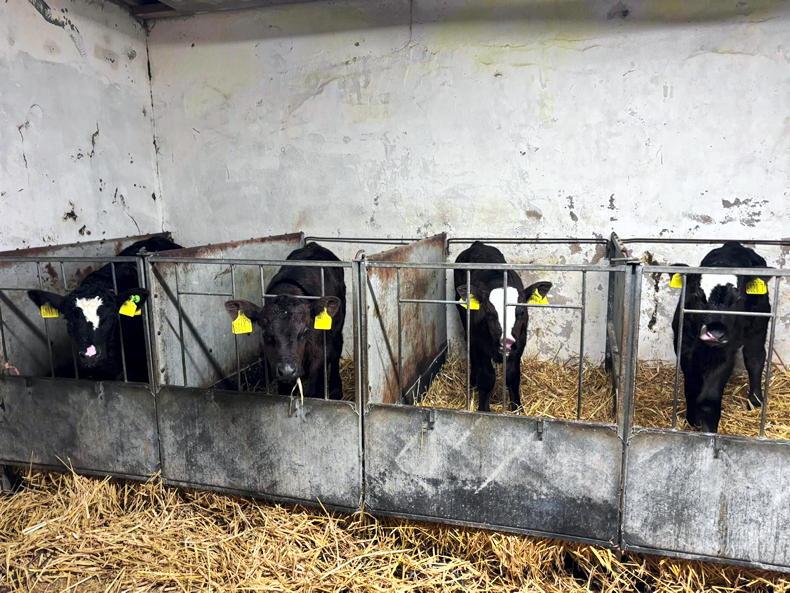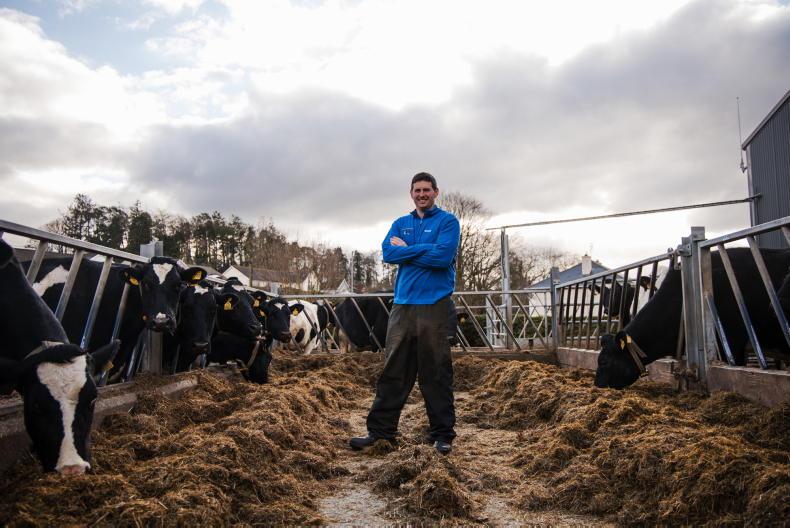Many farms across Northern Ireland are currently suffering from a soil moisture deficit, despite rain showers materialising over the past week.
Due to this lack of moisture in the soil, grass growth has been severely hampered and, in many instances, livestock farmers have been faced with a grazing shortage.
While rainfall has been welcomed, it will take the best part of two to three weeks before grass growth recovers to the levels required to match the daily demand of grazing animals.
Until then, outlined are some steps cattle and sheep farmers should take to stretch grazing covers for as long as possible, until grass growth recovers.
1. Fertiliser
Rain showers may be localised, sporadic and extremely variable in the volumes recorded, but they do present a chance to get fertiliser applied to grazing and silage swards.
If using straight nitrogen, use a CAN-based fertiliser and consider the merits of sulphur at this stage of the season. Protected urea can be used, but availability may be an issue.
Aim to get 25 to 30 units/acre of nitrogen applied to grazing swards to kickstart growth. Where possible, target early morning or late evening for spreading fertiliser, when there is possibly dew on the ground.
If there is no rain forecast, hold off on applying fertiliser until such time as 5mm to 10mm is likely to fall.
2. Strip-grazing
Where soils are lacking moisture, there is little chance of inflicting ground damage. Therefore, consider strip-grazing to control intakes, improve grass utilisation and to stop animals spoiling swards.
Mains electric works best, but a 12v battery unit with solar panel is perfectly capable of holding cattle back with one strand of wire. Use at least three wires for sheep.
Move the fence at least once a day. Moving the wire twice a day is even better, but more time-consuming. Just make sure to move the wire on time and don’t let animals run out of grass.
3. Pre-mowing
Where grass has headed-out, pre-mowing a section every day is an option. This leaves a clean residual for regrowth and animals will clean up the grass mown, again improving utilisation.
However, avoid pre-mowing if swards have ragwort present.
4. Back-fencing grazed areas
Where possible, try to protect regrowth after rain.
Try to prevent cattle walking back over grazed areas or low covers using a back fence. This should stop animals nipping off new shoots.
5. Buffer-feeding
Buffer-feeding animals will ease the demand for fresh-grazed grass.
If animals are offered forage in the field, choose a higher dry matter fodder that is less likely to spoil in warm conditions.
Continue to buffer-feed until grass growth recovers, tapering the amount of forage down as growth rates increase. With dairy cows, animals can be buffer-fed in the shed after milking.
With forward stores, 2kg to 3kg/head of rolled barley at grass will maintain weight gain, and where grass has headed out, there will be sufficient fibre in the diet.
6. Reducing grazing demand
On suckler farms with autumn herds, dry off August and September calving animals, remembering to take steps to prevent summer mastitis.
Cull cow prices remain relatively strong, so consider offloading problem cows. Drafting lambs every week and culling problem ewes is also recommended.
Read more
What covers Ireland’s land surface?
Sheep prices on the way up - Bord Bia
Many farms across Northern Ireland are currently suffering from a soil moisture deficit, despite rain showers materialising over the past week.
Due to this lack of moisture in the soil, grass growth has been severely hampered and, in many instances, livestock farmers have been faced with a grazing shortage.
While rainfall has been welcomed, it will take the best part of two to three weeks before grass growth recovers to the levels required to match the daily demand of grazing animals.
Until then, outlined are some steps cattle and sheep farmers should take to stretch grazing covers for as long as possible, until grass growth recovers.
1. Fertiliser
Rain showers may be localised, sporadic and extremely variable in the volumes recorded, but they do present a chance to get fertiliser applied to grazing and silage swards.
If using straight nitrogen, use a CAN-based fertiliser and consider the merits of sulphur at this stage of the season. Protected urea can be used, but availability may be an issue.
Aim to get 25 to 30 units/acre of nitrogen applied to grazing swards to kickstart growth. Where possible, target early morning or late evening for spreading fertiliser, when there is possibly dew on the ground.
If there is no rain forecast, hold off on applying fertiliser until such time as 5mm to 10mm is likely to fall.
2. Strip-grazing
Where soils are lacking moisture, there is little chance of inflicting ground damage. Therefore, consider strip-grazing to control intakes, improve grass utilisation and to stop animals spoiling swards.
Mains electric works best, but a 12v battery unit with solar panel is perfectly capable of holding cattle back with one strand of wire. Use at least three wires for sheep.
Move the fence at least once a day. Moving the wire twice a day is even better, but more time-consuming. Just make sure to move the wire on time and don’t let animals run out of grass.
3. Pre-mowing
Where grass has headed-out, pre-mowing a section every day is an option. This leaves a clean residual for regrowth and animals will clean up the grass mown, again improving utilisation.
However, avoid pre-mowing if swards have ragwort present.
4. Back-fencing grazed areas
Where possible, try to protect regrowth after rain.
Try to prevent cattle walking back over grazed areas or low covers using a back fence. This should stop animals nipping off new shoots.
5. Buffer-feeding
Buffer-feeding animals will ease the demand for fresh-grazed grass.
If animals are offered forage in the field, choose a higher dry matter fodder that is less likely to spoil in warm conditions.
Continue to buffer-feed until grass growth recovers, tapering the amount of forage down as growth rates increase. With dairy cows, animals can be buffer-fed in the shed after milking.
With forward stores, 2kg to 3kg/head of rolled barley at grass will maintain weight gain, and where grass has headed out, there will be sufficient fibre in the diet.
6. Reducing grazing demand
On suckler farms with autumn herds, dry off August and September calving animals, remembering to take steps to prevent summer mastitis.
Cull cow prices remain relatively strong, so consider offloading problem cows. Drafting lambs every week and culling problem ewes is also recommended.
Read more
What covers Ireland’s land surface?
Sheep prices on the way up - Bord Bia










SHARING OPTIONS